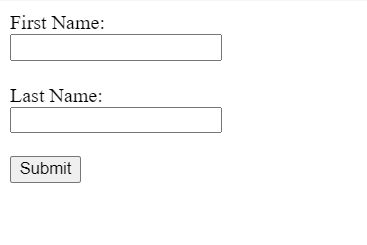HTML Text box
What is HTML?
HTML is a common markupmarkup language used as a foundation of every webpage we see online. Thus, HTML is a markup language that is used by all web pages. HTML documents consist of tags that arrange and structure their content. This block is a basic block that is responsible for organizing the page and includes the layout elements, adding headers, paragraphs, links, pictures, and lists to the sites main content.
HTML tags are a secondary culprit that reveals the concept of HTML and sometimes the structure behind it, hence playing the role of the marquee tool. HTML web pages should be arranged in blocks, which include the nested into one other component that can be different - the content or some other feature. The sample HTML document containing one of the most basic metadata elements (like the title, character encoding, etc.) will be rather easy to write.
What is an HTML Textbox
An HTML textbox, also referred to as an input field, is a component that users may use to submit text. It enables users to input and modify text into forms on websites, including names, passwords, comments, and other kinds of data. The '' element with the 'type="text" 'property is used to construct textboxes.
To manage their look and behavior, they may be customized using a variety of characteristics, including 'id', 'name', 'value', 'placeholder', 'size', 'maxlength', and 'readonly'. Web forms frequently employ textboxes for data entry, search, login, and user registration.
Uses of HTML Textbox
HTML text boxes, often known as input fields, are required for gathering user input in online forms. They have different uses and may be applied in different ways to improve a web page's usefulness and interaction. Typical applications for HTML text boxes consist of:
1. Data Collection: When consumers fill out forms on websites, text boxes collect various data, including names, addresses, phone numbers, and email addresses.
Text boxes are frequently used as search boxes, enabling visitors to type in search terms and obtain pertinent data from a website's database.
2. User authentication: Before allowing users access to particular sections of a website, text fields in login forms gather usernames and passwords to authenticate users.
3. Comments & Feedback: Users can communicate with website owners or administrators by using text boxes to provide comments, feedback, and notes.
4. Personalization and Customisation: Text fields allow users to enter preferences or settings or otherwise personalize their online experience.
5. Data Filtering: Text boxes may be used in data-driven web applications to search and filter through big datasets, making it easier for users to discover relevant information quickly.
6. Computations and input validation: Text boxes can be used to gather numerical data for computations or to verify input data by making sure it satisfies certain standards before submitting it.
Example:
<!DOCTYPE html>
<html lang="en">
<head>
<meta charset="UTF-8">
<meta http-equiv="X-UA-Compatible" content="IE=edge">
<meta name="viewport" content="width=device-width, initial-scale=1.0">
<title>HTML Text Box Example</title>
</head>
<body>
<form>
<label for="fname">First Name:</label><br>
<input type="text" id="fname" name="fname"><br><br>
<label for="lname">Last Name:</label><br>
<input type="text" id="lname" name="lname"><br><br>
<input type="submit" value="Submit">
</form>
</body>
</html>
Output:
 Conclusion
Conclusion
Finally, HTML textboxes are crucial components for obtaining user input on online forms. They let users input text, numbers, or other kinds of data that may be utilized for client-side functions or processed by the server. Textboxes may have their size, maxlength, and placeholder text changed, among other properties, to alter how they look and behave.
Web developers should be familiar with creating and utilizing textboxes as they are frequently utilized in forms for login, search, registration, and other purposes. Developers may construct web apps that are more dynamic and user-friendly by becoming proficient with textboxes.